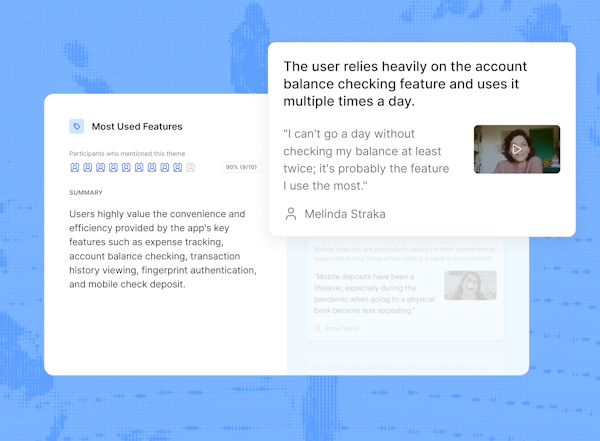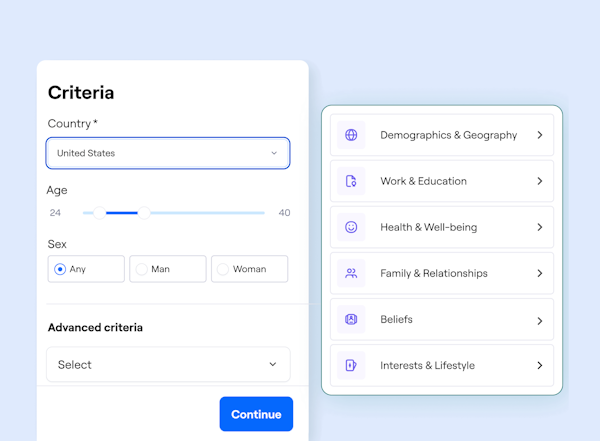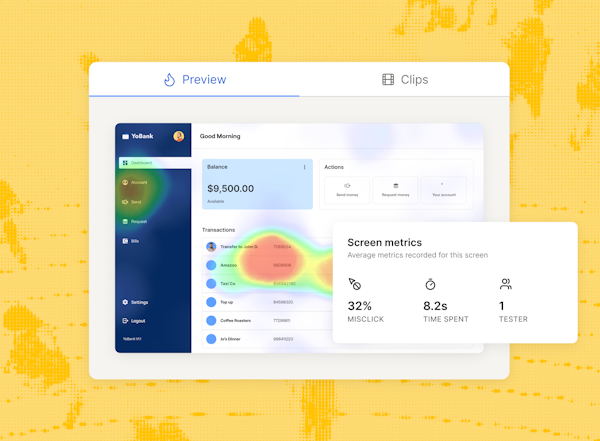Comparing research platforms
Maze vs. Useberry: Which is right for research with your users?
Maze is a Useberry alternative that helps companies build the right products faster by making user insights available at the speed of product development.
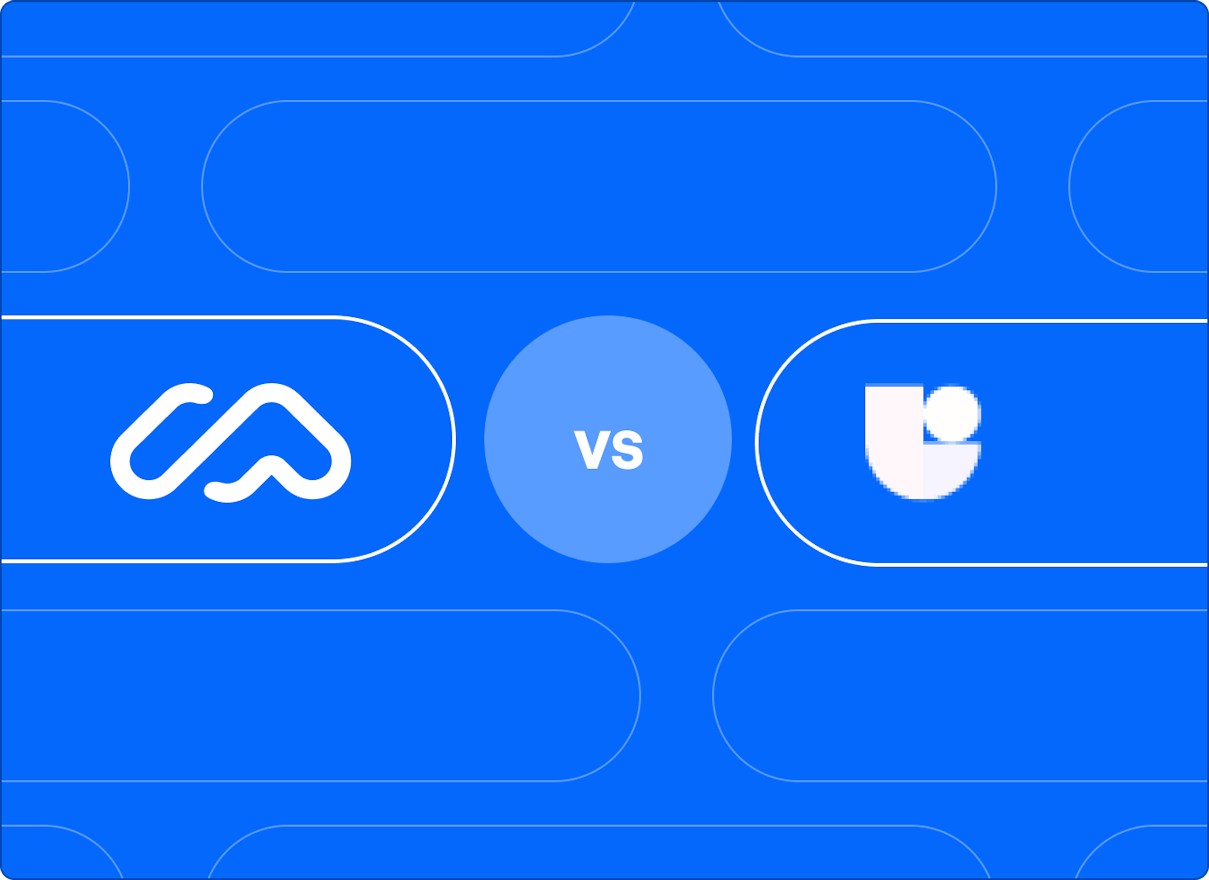
Maze vs. Useberry: Introduction
When it comes to research with your users, choosing the right platform can make all the difference to your team. Useberry and Maze are two popular research platforms in the market, but which is the better choice for your organization?
Useberry is a user testing platform that focuses on unmoderated UX testing. It supports tree testing, card sorting, surveys, first-click tests, five-second tests, and single-step usability testing, making it a good choice for designers and small teams who need quick, lightweight validation. Its ease of setup and fast feedback cycles make it effective for early-stage concept checks and rapid iteration.
Maze is an AI-first end-to-end platform that empowers teams with both qualitative and quantitative insights. It supports everything from prototype testing and live website/mobile usability testing to surveys, card sorts, tree tests, and interviews (including an AI moderator that can run interviews across time zones). Maze also includes participant recruitment and management tools, plus automated, customizable reports that make it easier to share insights and democratize research across teams.
In this detailed comparison, we’re covering how both these platforms compare to each other in key points such as:
- User-friendliness: How easy will this platform be to onboard with my team or organization? Will this help democratize our user research?
- Versatility: Is this a true end-to-end platform? Does it facilitate both quantitative and qualitative research methods? How well does this platform integrate with the design tools we use?
- Product decision making: How easily and quickly can we analyze results and customize insight reports to make important decisions?
Platform comparison (from G2 user reviews)
Maze | Useberry | |
|---|---|---|
Overall rating (G2) | 4.5 / 5 out of 100+ reviews | 4.3 / 5 out of 16 reviews |
Ease of use | 9.0 / 10 | 8.9 / 10 |
Ease of setup | 9.4 / 10 | 9.0 / 10 |
Pricing |
|
|
Maze vs. Useberry: Main differences
What really sets Maze and Useberry apart for teams doing research?
Moderated interview capabilities
Useberry doesn’t support moderated interviews, limiting the depth of insights you can collect on the platform. Maze not only provides native user interview hosting and analysis, but Maze’s AI moderator also lets you run asynchronous interviews at scale and across time zones.
Participant management
Useberry offers access to a pool of 200k participants for research studies. With Maze Panel, teams can recruit from over 6M+ global participants using 400+ targeting attributes. Maze Reach offers a built-in participant CRM to segment users, track participation history, and run targeted campaigns.
Analysis and reporting functionalities
Maze speeds up analysis with AI-generated themes, sentiment tagging, and insight summaries. Reports are customizable, easy to filter and comment on, and can be embedded in tools like Slack and Notion to keep insights visible across teams.
Maze vs. Useberry: Feature comparison
Features
Useberry
Maze
Amplitude, Atlassian, Miro, Notion, Slack
—
Amplitude, Atlassian, Miro, Notion, Slack
Axure, Figma
Adobe XD, Figma, Sketch, Protopie
Axure, Figma
Bolt, Figma Make, Loveable, Replit
—
Bolt, Figma Make, Loveable, Replit
150+ countries
34 countries
150+ countries
—
—
—
—
—
—
—
Google Meet, Microsoft Teams, Zoom
—
Google Meet, Microsoft Teams, Zoom
—
—
Maze vs. Useberry: AI capabilities
Features
Useberry
Maze
—
—
—
—
—
—
—
—
—
—
Maze vs. Useberry: Takeaways
At the end of the day, it comes down to which platform aligns better your workflow and your vision as a team.
Useberry offers a range of solutions for quantitative usability testing that may be a fit for some teams looking to validate ideas or concepts.
Maze is an intuitive, cost-effective choice for teams who need a blend of qualitative and quantitative research to inform everyday product decisions. With AI-powered reporting, filtering, and analysis, and research solutions for prototype tests, live website testing, and surveys, Maze gives teams flexibility across the product lifecycle. Plus, Maze’s AI moderator runs automated interviews with follow-up questions and collects responses across time zones, including from global participants, so teams can gather qualitative insights without coordinating live sessions.

![]()
Maze allows us to consolidate our research in one place and make it visible for everyone. I’m optimistic that Maze will help keep things more centralized and help us work better together as a team.
Janet Taylor
Senior Director of Product Design and Research at Homebase
![]()
Using Maze has supercharged our product design process and made it possible to drive faster turnaround times, speeding up product iteration and making for a better, faster user experience.
Yuna Akazawa
Product Designer at Braze
![]()
Maze allows us to consolidate our research in one place and make it visible for everyone. I’m optimistic that Maze will help keep things more centralized and help us work better together as a team.
Janet Taylor
Senior Director of Product Design and Research at Homebase
![]()
Using Maze has supercharged our product design process and made it possible to drive faster turnaround times, speeding up product iteration and making for a better, faster user experience.
Yuna Akazawa
Product Designer at Braze
Why product and design teams choose Maze over Useberry
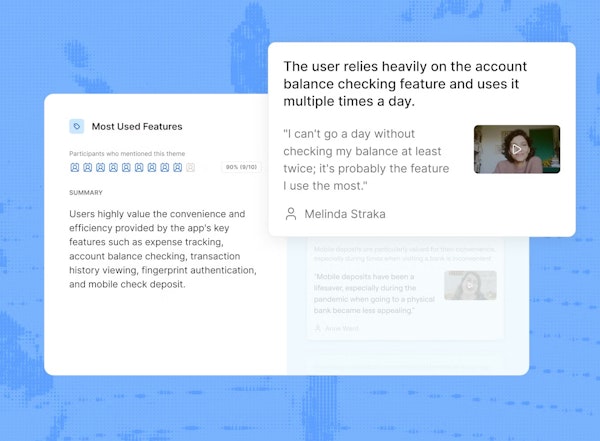
User interview studies
Maze supports both live and asynchronous interviews on one platform. Set up live interview studies, or opt for the AI moderator to run interviews across time zones. All interviews are followed up with AI-powered themes, summaries, and insights to streamline research.
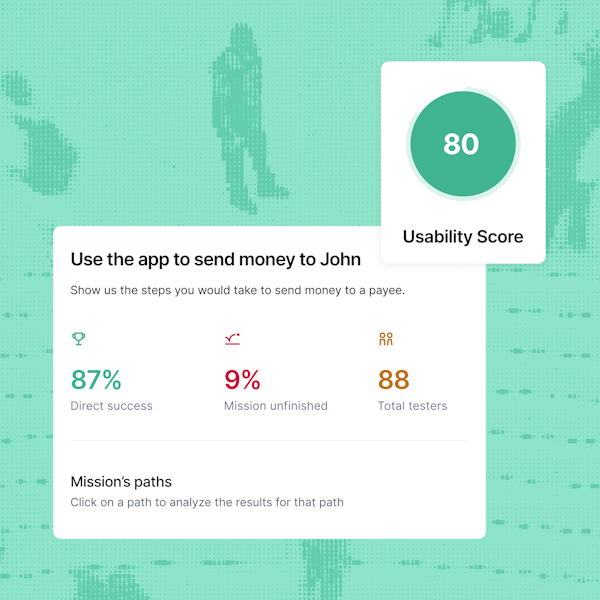
Robust reporting
Data insights are only as valuable as they are understandable. Maze's reports are automated, visually rich, and fully customizable. Plus, you can easily embed them in your favorite tools.
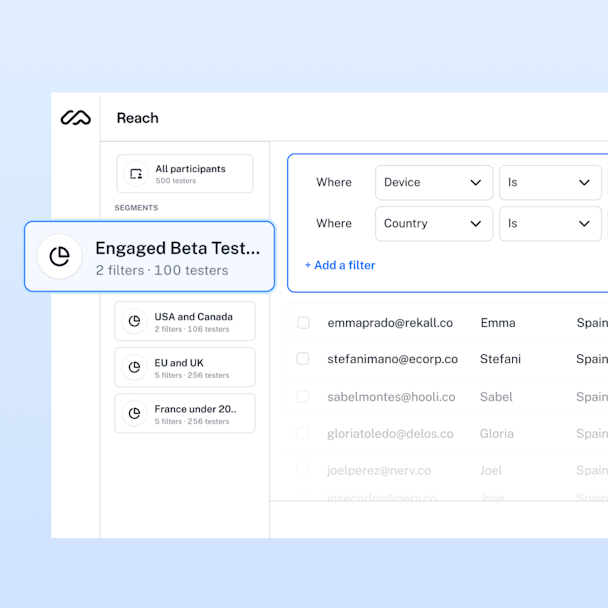
Comprehensive participant management
Maze gives you control over how you source, manage, and re-engage participants. Choose from a global panel of 6M+ users with 400+ targeting filters, or build your own database with Reach, Maze’s participant CRM that lets you organize contacts, track participation history, create segments, and easily run follow-up studies.

Maze AI
Embrace the future of user research
Elevate your company's product research with innovative, AI-powered capabilities that enable you to collect more insights, faster, and with more precision than ever before.
Frequently asked questions
Why choose Maze over Useberry for user research?
Why choose Maze over Useberry for user research?
Product managers, designers, and researchers pick Maze over Useberry because it offers a more complete and modern research experience. While Useberry has no AI capabilities, Maze combines Maze AI and Maze’s AI moderator to automate interviews, generate themes and sentiment, and simplify analysis across studies. Maze also supports a range of qualitative and quantitative methods, capturing behavioral metrics like time on task, error rates, clickstreams, and heatmaps. Plus, Maze’s automated, customizable reports make it easy to filter findings and share insights across teams.
How can I start using Maze?
How can I start using Maze?
You can get started with Maze by signing up for a free account—no credit card needed. It’s a quick way to explore the platform and run your first study. If you’re looking for a tailored walkthrough or want to see how Maze fits into your team’s workflow, you can also book a demo with our team.
Who is Maze for?
Who is Maze for?
Maze is built for product teams, UX researchers, designers, and anyone involved in making user-informed decisions. Whether you're part of a startup running lean tests or an enterprise scaling research across departments, Maze gives you the tools to collect insights quickly, collaborate easily, and deliver better experiences.
Can Maze do moderated interviews?
Can Maze do moderated interviews?
Yes. Interview Studies allow you to schedule, run, and analyze user interviews seamlessly with Maze.
What kind of teams use Maze?
What kind of teams use Maze?
Maze is used by product, design, research, and marketing teams at companies of all sizes—from early-stage startups to global enterprises. It’s especially valuable for teams practicing continuous discovery, looking to scale research, or aiming to democratize insights across functions. Whether you're validating prototypes, testing live flows, or running interviews, Maze supports cross-functional teams working to build better products.
Can I request a demo?
Can I request a demo?
Absolutely! Tell us a little about your company here and we’ll connect you with someone in our team.
Do you have comparisons with other platforms?
Do you have comparisons with other platforms?
Yes. Read on to discover all comparisons of Maze with other platforms.
How do Maze and Useberry compare in AI functionalities?
How do Maze and Useberry compare in AI functionalities?
Maze offers a full suite of AI features, while Useberry currently has none. Maze includes automated reporting, themes, summaries, question suggestions, and AI moderator for automated interviews with follow-up questions. It also supports AI-generated prototype testing through tools like Figma Make, Bolt, Loveable, and Replit. Teams choose Maze when they want AI support across planning, usability testing, interviews, and analysis, and Useberry when they prefer a simpler, test-focused workflow.

Bring a customer-focused mindset to your organization
Maze gives product teams a scalable way to uncover user insights at speed and feed them across the entire product development cycle.
